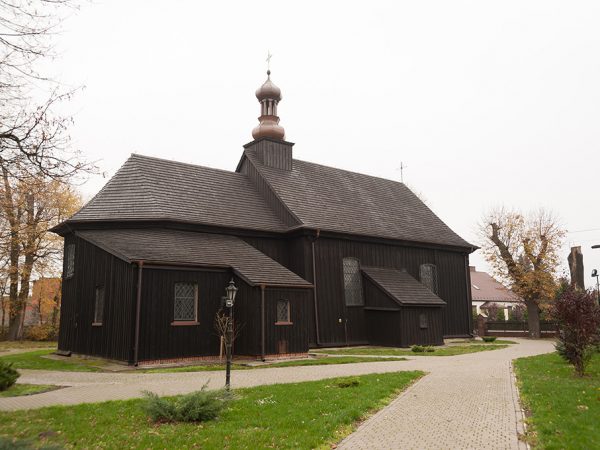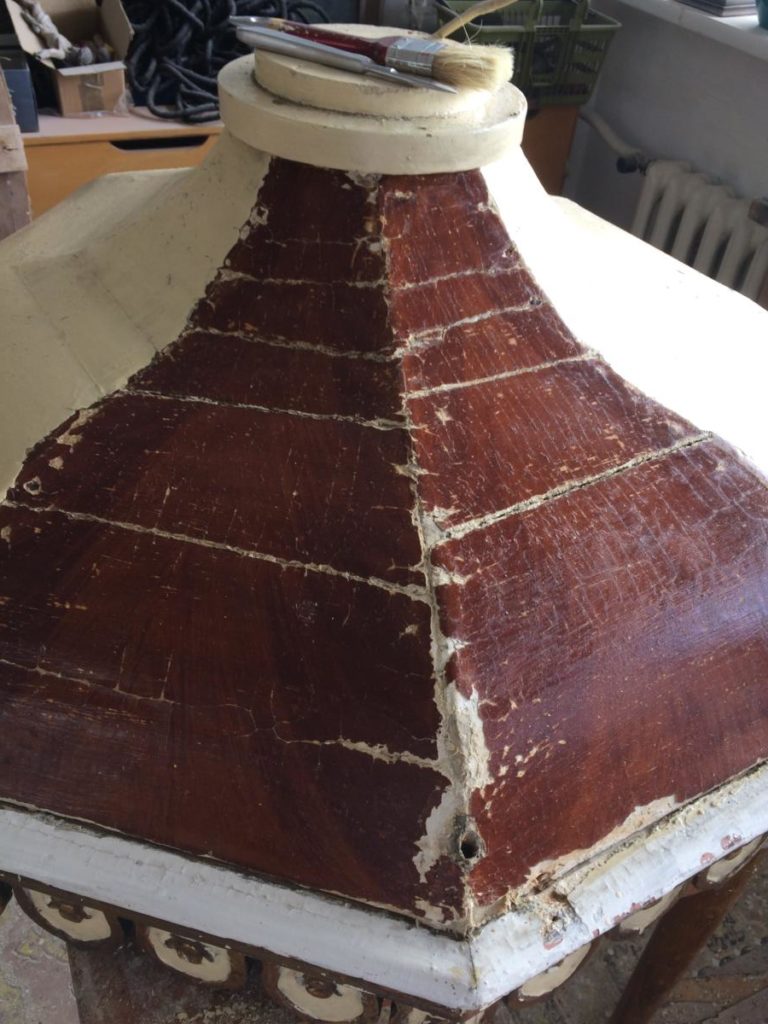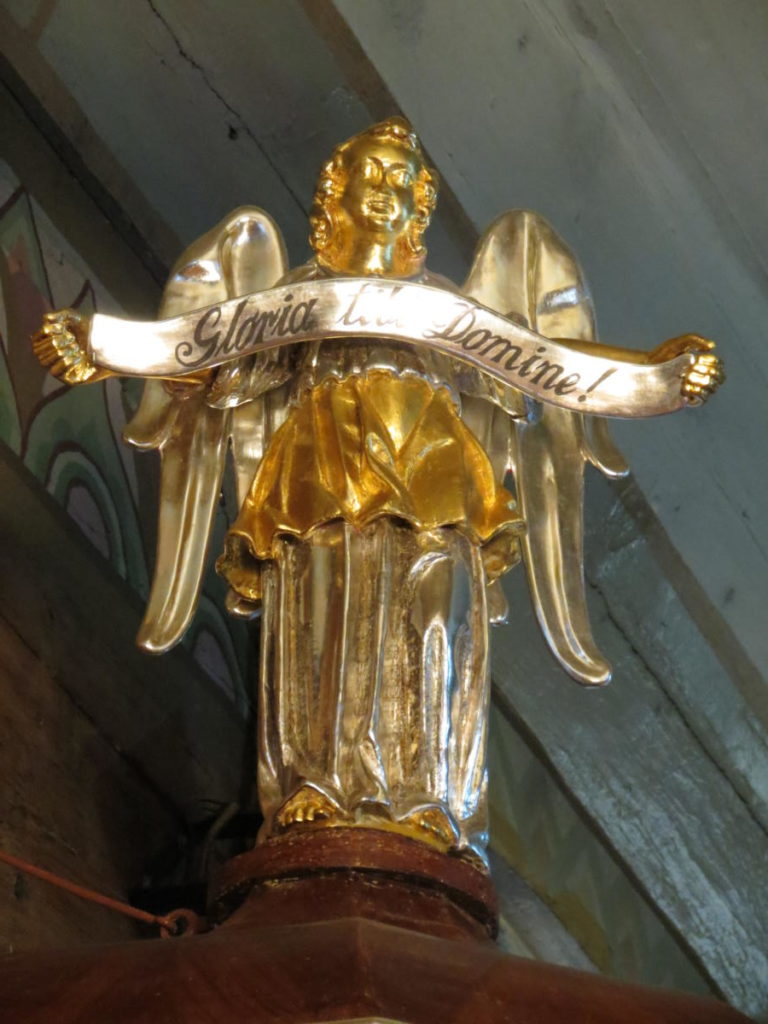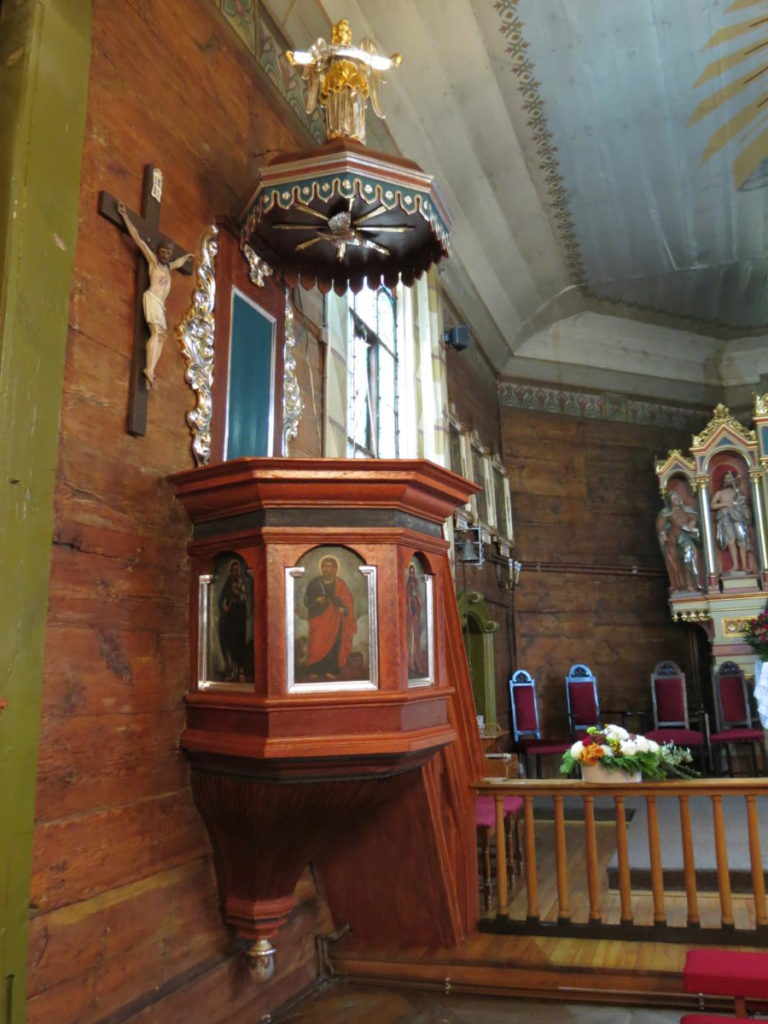
Church of All Saints in Droszew
RENOVATION OF THE HISTORICAL PULPIT FROM THE CHURCH OF ALL SAINTS IN DROSZEW
The pulpit from the church of All Saints in Droszew consists of a few elements which come from various periods. There are baroque parts from the middle of the 18th century, to which belong: a part of the basket, carved decorations and paintings of the Four Evangelists, and the backboard, the canopy, the balustrade and the stairs date back to the 19th century.




The general condition of the object was bad, mainly due to plastic transformations which the object had undergone, as well as physical, chemical and biological processes. Signs of woodboring beetles were detected, wood in some woodcarved parts had deteriorated completely. Thick layers of monochromatic repaintings had delaminated, and unoriginal gildings made with base metals had darkened. Cracks and gaping planks were visible, the paintings were very dirty and the varnish had gone dark.
The main aim of the renovation was to prevent further damage to the object, ablate repainting and metallization which distorted aesthetic reception of the pulpit.
Before the start of renovation, photographic and descriptive documentation of the object’s condition was completed. After the tests which allowed to study the technical construction of the pulpit, mobile elements were disassembled. When the pulpit was preliminarily cleaned, it was sterilized by the means of an insecticide and wood was impregnated with acrylic resin solution by topical coating method.


Next the layer of paint was cleaned by a sets of solvents and by a mechanical removal of unoriginal layers with a scalpel and scrapers. Oil and emulsion repaintings together with a major part of old chalk-adhesive putties as well as resin-saturated and silicone putties. Small losses of wood were filled with resin material, losses of paint were filled with emulsion putty. Next, the original colours of the pulpit were recreated.
Disassembled mobile elements were secured and transported to a workshop. The elements were sterilized with an insecticide, and then wood was impregnated with a solution of acrylic resin by a means of topical coating method. The next step involved gluing cracks and damages of the base. Part of woodcarved elements required filling of wood, bigger losses were filled with plugs, and smaller cracks as well as reconstructions of elements were made with resin material.


In both woodcarved elements as well as in sculptures, unoriginal gilding was removed with the use of gilding on bole and gold and silver leaf. Silvering was secured with shellac.


The paitings were cleaned from the back and the front with a mixture of solvents. Old putty and retouch were removed. Emulsion putty was placed in the parts where losses occurred and stippled with oil paints with drained adhesive. It was secured with dammar, neutral varnish.
Eventually all elements were reassembled in the church, and then photographic, descriptive and renovation documentation was made.






